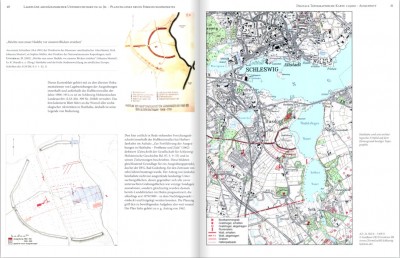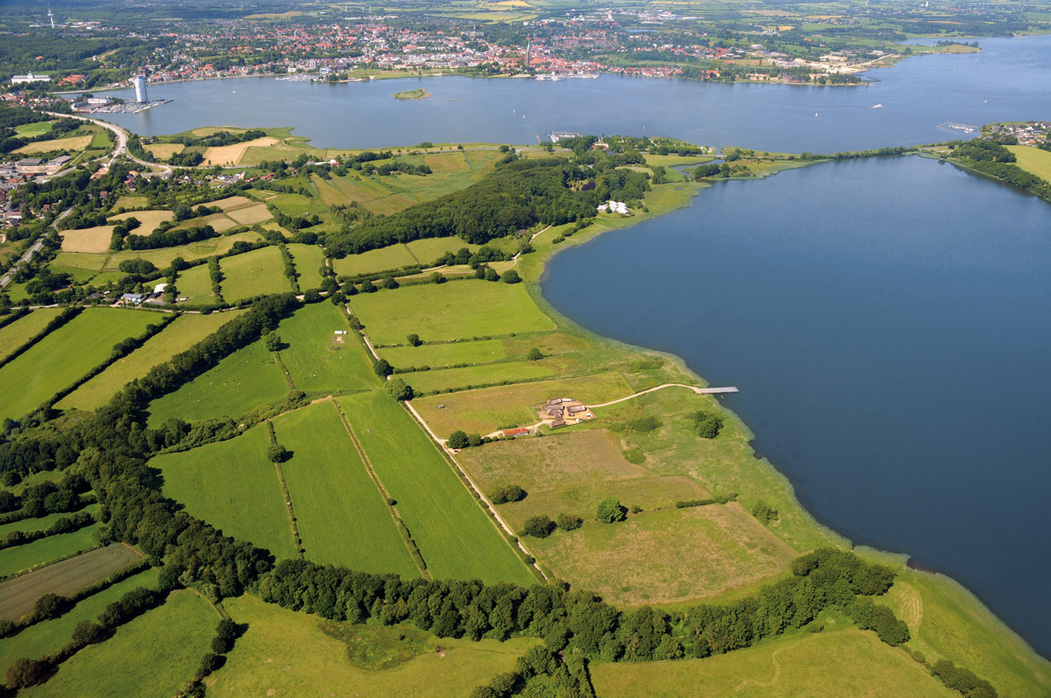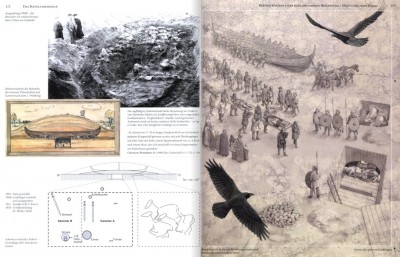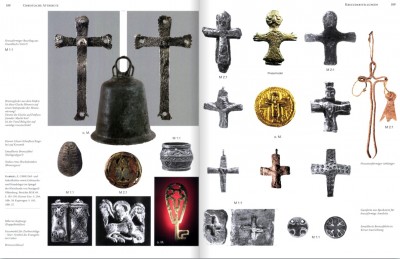Only a tiny part of the Viking town of Haithabu in Schleswig has been excavated. Nevertheless, the collection of finds is extraordinary rich and captivating. New book presents us with endless hours of joy.
Spurensuche Haithabu. Archäologische Spurensuche in der frühmittelalterlichen Ansiedlung Haithabu. Dokumentation und Chronik 1963–2013
[Traces of Haithabu. Documentation and Cronique 1963 – 1213]
By Kurt Schitzel
Wachholtz Verlag GmbH 2014
ISBN: 9783529017971
“Before his return [to Denmark] Godofried destroyed a trading place on the seashore, in Danish called Reric, which because of the taxes it paid, was of great advantage to his kingdom. Transferring the merchants from Reric, he weighed anchor and came with his whole army to the harbour of Schleswig. There he remained for a few days and decided to fortify the border of his kingdom against Saxony with a rampart, so that a protective bulwark would stretch from the Eastern bay, called Ostarsalt, as far as the western sea, along the entire north bank of the river Eider and broken by a single gate through which wagons and horsemen would be able to leave and enter.” (Royal Frankish Annals AD 808)
The location, to where the merchants were transferred, is well-known as Haithabu. Probably founded around AD 770, this trading town located at the end of the defensive wall soon became the largest emporium in Scandinavia until it was repeatedly sacked in the middle of the 11th century. Around 1066 the town was relocated to the Northern coast of the firth and renamed Schleswig.
 Since then has the rich remains of a Viking town lain encapsulated beneath uncultivated meadows until the Danish archaeologist Sophus Müller went on a field trip in the end of the 19th century. Just by walking through he discovered a series of artefacts. Since then archaeologists have been busy excavating. As of today, only a very small portion has been excavated. The rest has been carefully mapped and explored. Of particular interest was the excavation of the harbour, which yielded an enormous amounts of very significant finds.
Since then has the rich remains of a Viking town lain encapsulated beneath uncultivated meadows until the Danish archaeologist Sophus Müller went on a field trip in the end of the 19th century. Just by walking through he discovered a series of artefacts. Since then archaeologists have been busy excavating. As of today, only a very small portion has been excavated. The rest has been carefully mapped and explored. Of particular interest was the excavation of the harbour, which yielded an enormous amounts of very significant finds.
A tiny fragment of all this is exhibited at museum on site, which is highly recommended for anyone interested in the Viking age. However, it is exactly that: a few pieces of what is obviously an unimaginable treasure-trove.
This book is in German. However it should – as soon as possible – be translated into English. The reason is, the book holds 647 pages brimming with illustrations and explanations of the rich finds, which 50 years of excavations have yielded. As such it is a genuine treasure trove for scholars as well as reenactors.
The best would of course be if the Museum at Schloss-Gottorp got the means to digitize their full collection of photos and drawings and placed them on the internet. While we are waiting, though, we can begin perusing an impressive book of photos, drawings and reconstructions all accompanied by a lucid and well-written text. Anyone seriously interested in the material world of the Vikings needs to have this book in their book-case.
The book has been written by Kurt Schietzel, who led the excavations from1963 – 1998. Still going strong, it appears!
Ove Juul Nielsen
READ MORE:


